THE DEPARTMENT STORE
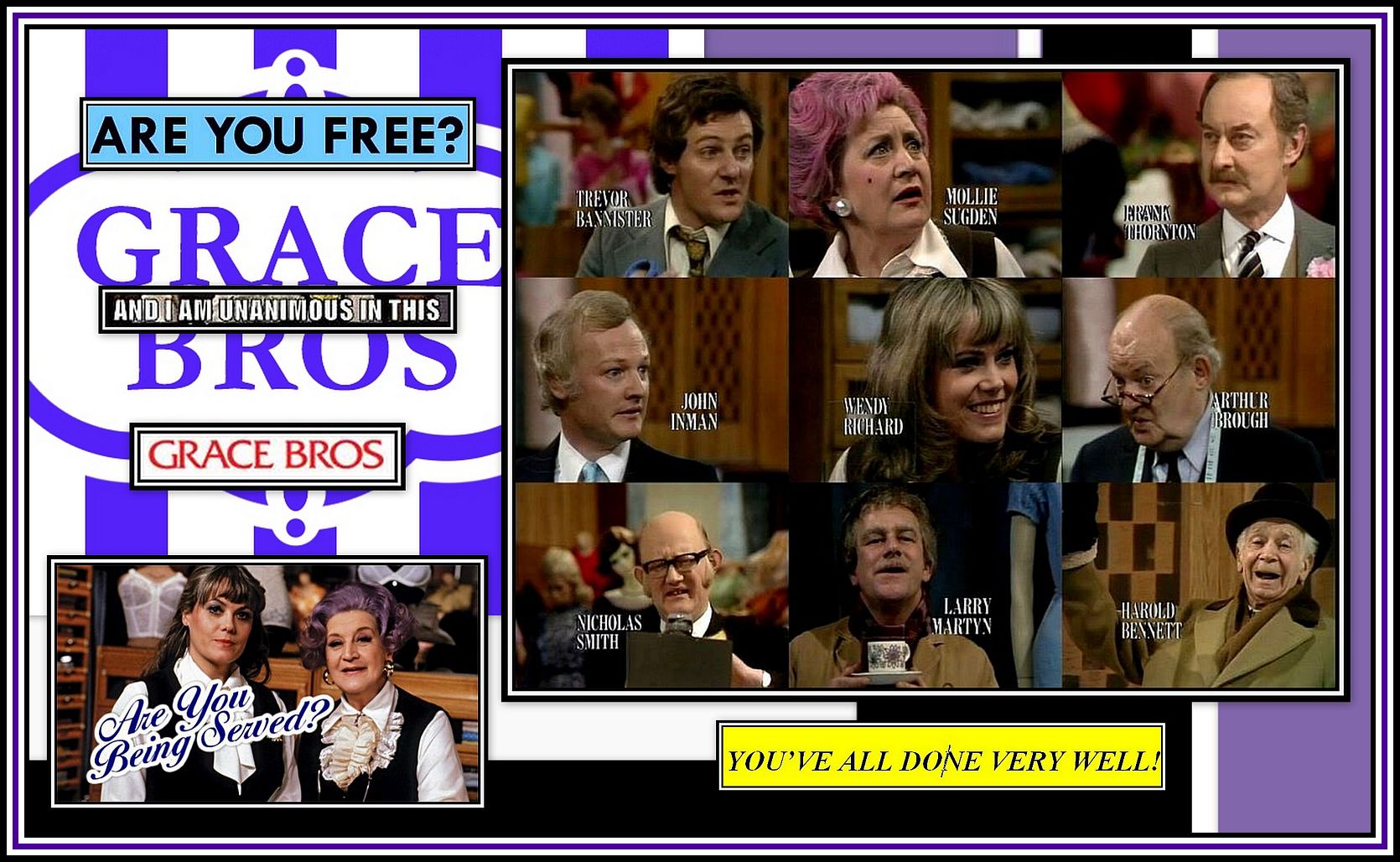 Grace Brothers Department Store
Grace Brothers Department Store
became possibly the most famous store in the world for a while thanks to
the BBC-Television Series, Are You Being Served?
Are You being Served Theme Music
-oOo-
OTHER DEPARTMENT STORES CONTINUED
-oOo-
10. BURBERRY OF LONDON Continued
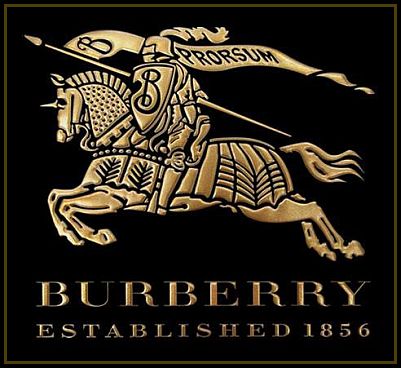
-oOo-
THE EVOLUTION OF THE TRENCH COAT
Who first designed The Trench Coat is a matter of debate: was it Thomas Burberry or was it John Emary whose company, Aquascutum, was established in 1851?
-oOo-
BURBERRY
In 1879, Thomas Burberry had developed Gabardine, a tightly woven, water-repellent and breathable worsted wool cloth. He registered the name, Gabardine, as a trademark and patiented its production in 1888. Mr. Burberry later used this fabric in the making of the The Tielocken Coat, which he patented in 1912. This coat proved to be the forerunner of his version of The Trench Coat.
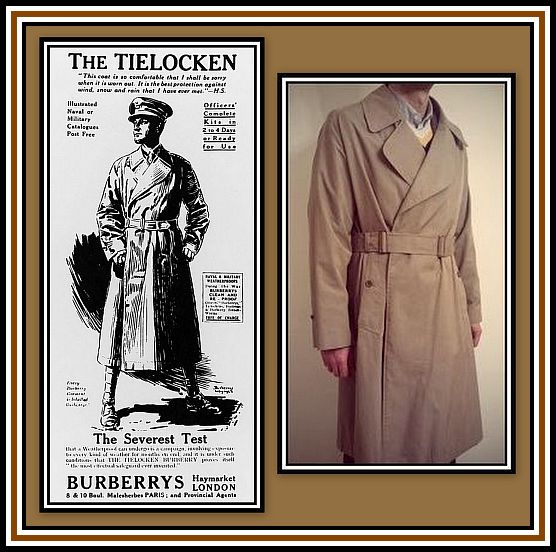 The Tielocken Coat
The Tielocken Coat
The Tielocken Coat could be closed by a single belt and buckle and had only one button at the collar and was first employed by the military in the Boer War in 1895.
In 1900, Mr. Burberry was commissioned by the War Office to design an overcoat to replace the heavy coats being used by the military at that time. Later, during the First World War, Mr. Burberry was asked to design coats for the British Royal Flying Corps. This coat came to be known as The Trench Coat.
-oOo-
AQUASCUTUM
John Emary, a tailor and entrepreneur, had opened a high quality menswear shop at 46 Regent Street in 1851.

Two years later, Mr. Emary produced a waterproof woolen fabric, which he named Aquascutum, a Latin word meaning Watershield. He also rename his emporium after the fabric and also patented its method of production. He used Aquascutum fabric to produce coats that were worn by soldiers during The Crimean War (1853-1856).
Following the successful use of his fabric in the production of coats supplied to the military, Mr. Emary relocated his business to a new flagship store at 100 Regent Street in 1901.
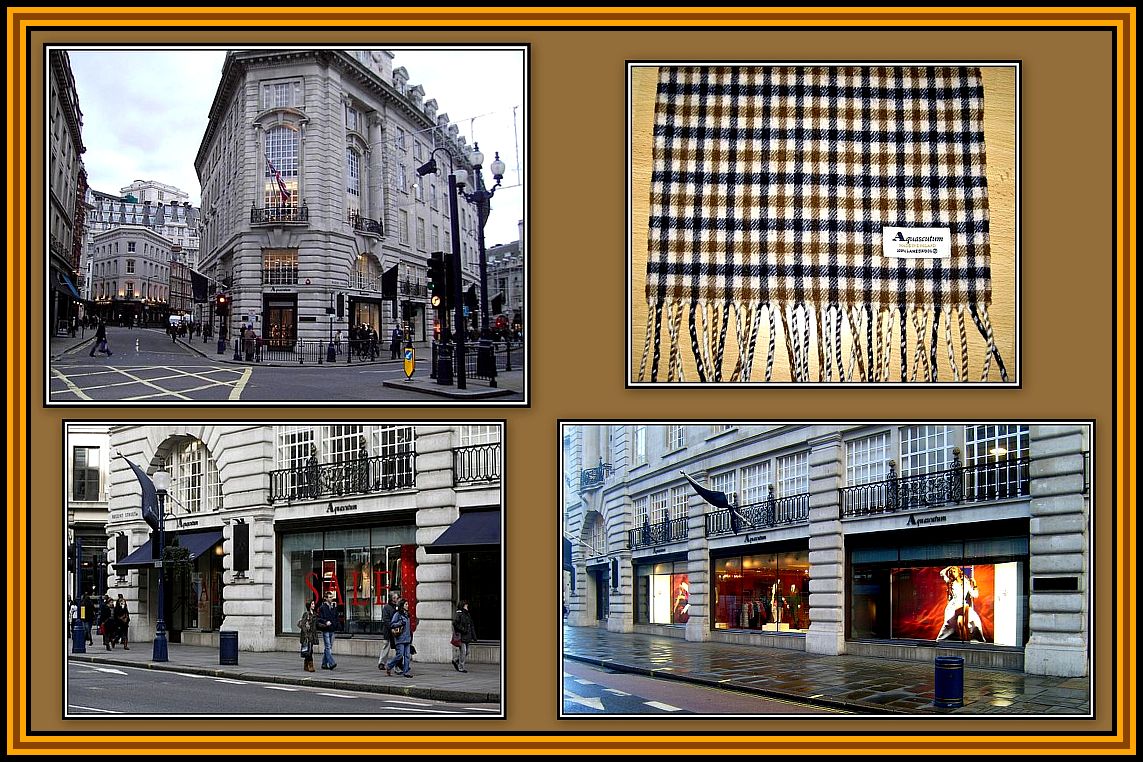 Aquascutum, Regent Street
Aquascutum, Regent Street
Mr. Emary seemingly made a number of designs, which he used to form the basis of his Trench Coat that was made of Aquascutum fabric. As with those of Burberry, Mr. Emary’s Trench Coats were also worn by officers during the First World War.
-oOo-
DETOUR – AQUASCUTUM – ADDITIONAL FACTS
Edward VII (1841-1910) became the first member of the Royal Family to become a client of Aquascutum when he ordered a coat in the Prince of Wales Check (i.e. Glen Plaid). In 1897 a Royal Warrant was granted to the company, and which marked the beginning of a long patronage with the Royal Family.
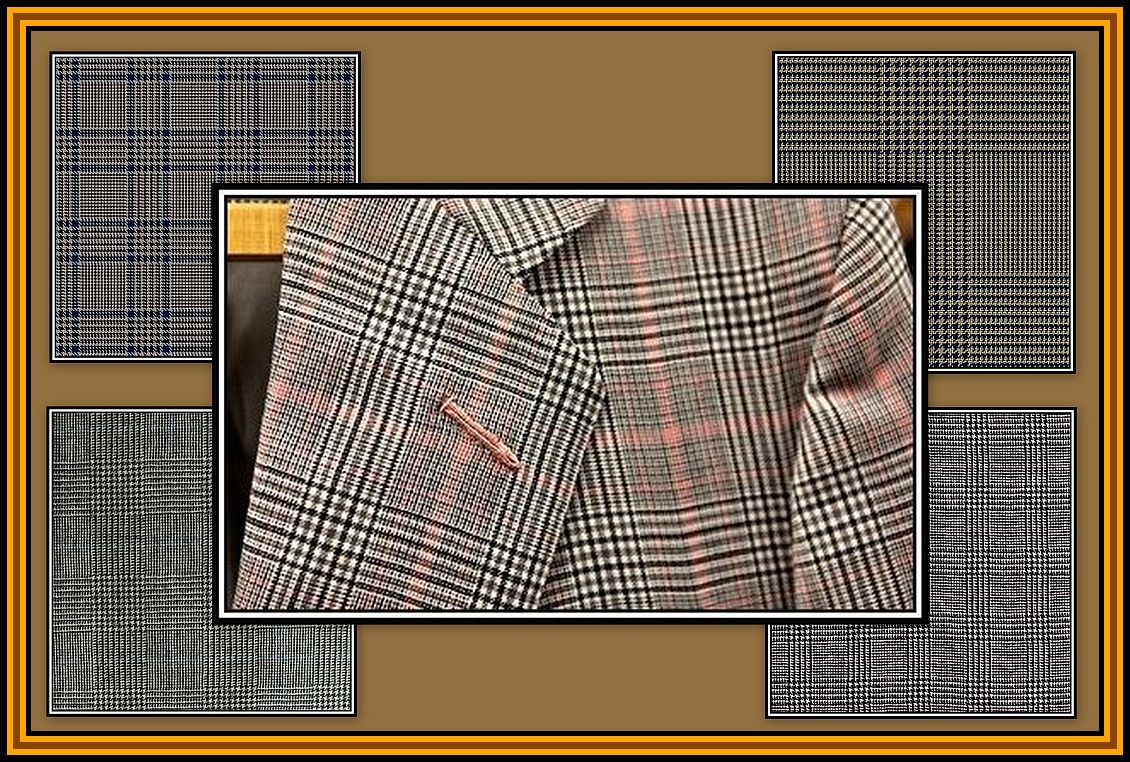 Prince of Wales Check
Prince of Wales Check
Edward, Duke of Windsor (1894-1972) further popularised the Prince of Wales Check while he held that title.
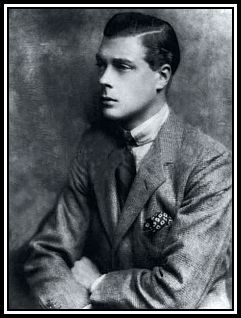 Edward, Duke of Windsor wearing a suit with a pattern of Prince of Wales Check
Edward, Duke of Windsor wearing a suit with a pattern of Prince of Wales Check
In 1900, Aquascutum began designing outerwear for women. The functionality of their coats and capes were to become popular with Suffragettes.
The Company has supplied clothes to three Princes of Wales, a number of other aristocrats, political leaders including Prime Ministers Margaret Thatcher (1923-2013) and John Major (1943) and to many in the entertainment business.
Aquascutum was a family-owned business until 1990, when it was purchased by Renown Incorporated, a Japanese textile conglomerate company. In 2009, it was sold to Jaeger, however, the company went into bankruptcy administration in April 2012. As of May 2012, YGM Trading, a Chinese fashion retailer, became the global owner of Aquascutum.
-oOo-
OTHER MANUFACTURERS OF THE TRENCH COAT
In addition to Burberry’s and Aquascutum, a number of others companies produced variations on The Trench Coat at this time and included the companies of:
- Thresher & Glenny: this company was founded in 1755 and is one of the oldest surviving tailors, shirt makers and outfitters still offering their services. Its logo involves a peacock and has been used since 1755 when the company opened its first emporium near the Inns of Court next to The Peacock Inn. Thresher & Glenny made over 28,000 Trench Coats of officers during the First World War. Today, the company has a retail outlet at 1 Middle Temple Lane.
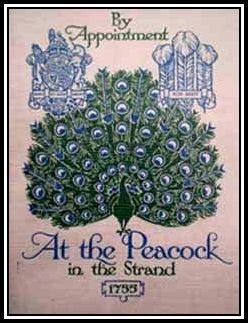
- Gerrish Ames & Simpkins: this company was a clothier and warehouse men of London and Basingstoke. The company established itself at Morley Hall, 129-133 Mare Street in the Borough of Hackney where it remained until 1962. I have been unable to learn if Trench Coats were made here and how many were sold;
- Kenneth Durward, Tailor: This company was housed at Ulster House, which was found at 37a Conduit Street in Mayfair.
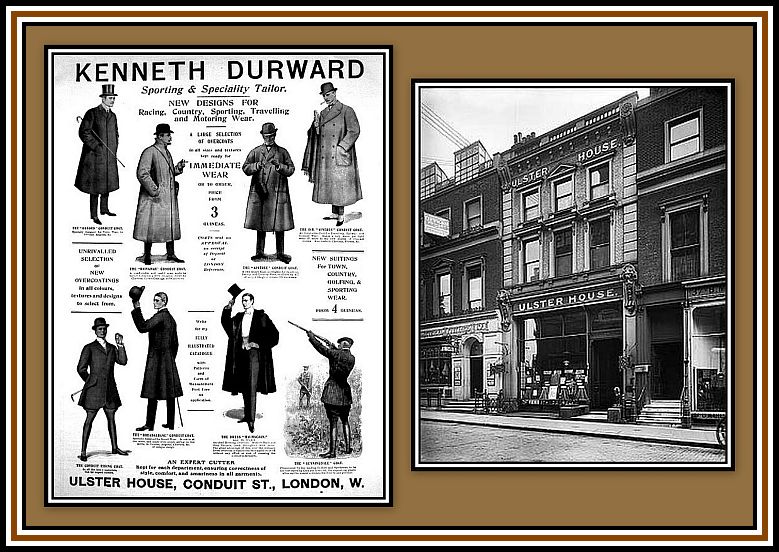 Kenneth Durward, Tailor, Ulster House, 37a Conduit Street, London
Kenneth Durward, Tailor, Ulster House, 37a Conduit Street, London
- David Moseley & Sons was founded in 1833 at Ardwick, Manchester, as a manufacturer of industrial rubber and plastics products. According to the advertisement below, the company also produced waterproof coats, capes and overalls. I have been unable to learn if Trench Coats were made here and how many were sold.
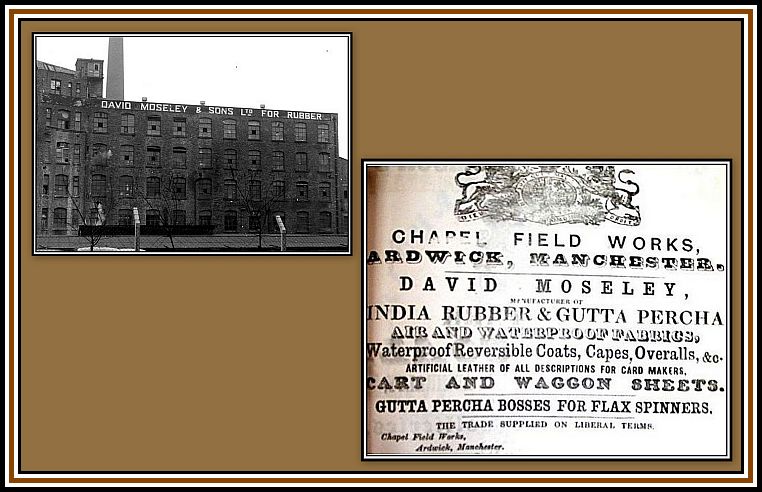 David Moseley & Sons, Chapel Field Works, Ardwick, Manchester
David Moseley & Sons, Chapel Field Works, Ardwick, Manchester
-oOo-
THE TRENCH COAT
The Trench Coat holds a place of significance in the history of the military uniform and also in the history of fashion since it became popular in various forms with the public and retains its popularity today.
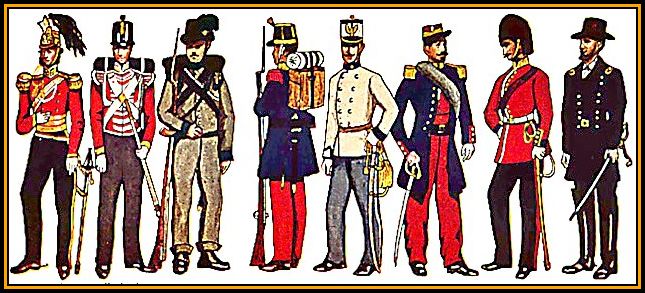 Associated Colourful Military Uniforms
Associated Colourful Military Uniforms
Military uniforms were once colourful and were associated with honour. French soldiers once wore red trousers because they felt it was dishonourable to be in camouflage. Uniforms were often glorious affairs decked with lots of gold braid. Sutherland Highlanders 93rd (Highland) Regiment was referred to as The Thin Red Line since they wore red jackets during military action at the Battle of Balaklava during the Crimean War.
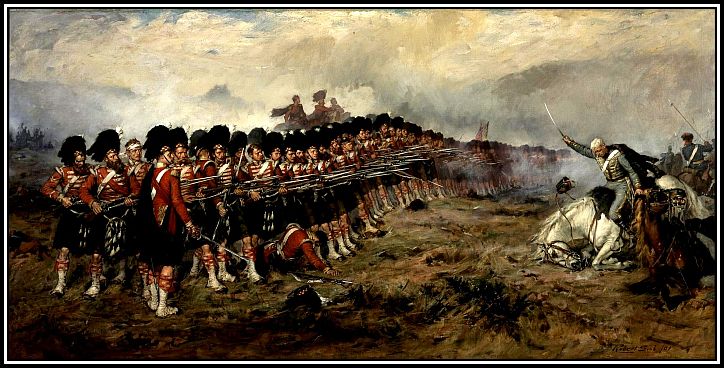 The Thin Red Line painted by Robert Gibb
The Thin Red Line painted by Robert Gibb
Of course, a colourful uniform had the advantage of allowing combatants to know who was friend and who was foe during a battle. However, today, such elaborate uniforms tend to be purely ceremonial and simpler attire serves for everyday purpose and combat.
Khaki uniforms were adopted by The British Military in 1857 during the Indian Mutiny (1857-1859). The War Office, upon this decision, stated that pragmatism was more important than honour. With this, military uniforms became less decorative and more functional.
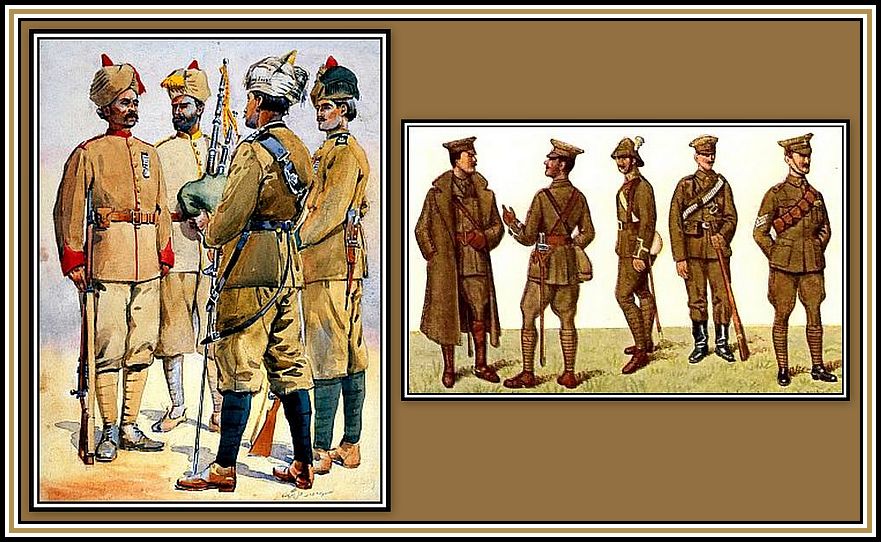 Left: Soldiers of the Frontier Force, 1908, by Major Alfred Crowdy Lovett (1862-1919) showing Sepoys of (from the right) a Gakhar of the 59th Scinde Rifles, a Punjabi Mussalman Piper of the 51st Sikhs and two Saghri Khattaks of the 55th Punjabi Rifles
Left: Soldiers of the Frontier Force, 1908, by Major Alfred Crowdy Lovett (1862-1919) showing Sepoys of (from the right) a Gakhar of the 59th Scinde Rifles, a Punjabi Mussalman Piper of the 51st Sikhs and two Saghri Khattaks of the 55th Punjabi Rifles
Right: British Soldiers in India during the 1840s in Khaki
-oOo-
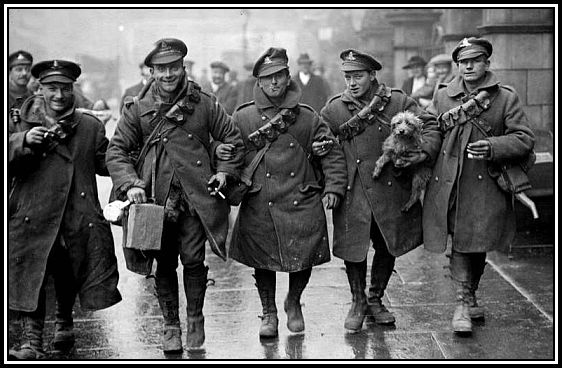 Soldiers during the First World War
Soldiers during the First World War
-oOo-
Unlike other ranks, officers were allowed to buy their own uniforms from tailors and many chose to outfit themselves with Burberry’s Tielocken Coat during the Boer War.

In 1900, the British War Office commissioned Mr. Burberry to design an overcoat for officers to replace the heavy coats then in use. During the First World War, he designed and produced coats for the British Royal Flying Corps.
-oOo-
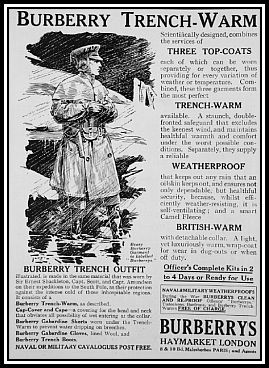
The Trench Coat was a lightweight coat, and despite this, kept the cold and rain out. The Coat proved to be highly suitable in the trenches of the First World War since it did not laden the wearer down when it got muddy. The Coat was in wide use by officers by 1917 and roughly half a million were sold during the First World War. Despite it’s widespread use, The Trench Coat was never a regulation garment to be supplied to each soldier.
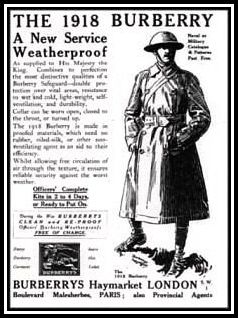
-oOo-
WHAT IS A TRENCH COAT
Traditionally, The Trench Coat is a lightweight waterproof double-breasted long coat with ten-buttons. It was originally Camel or Khaki in colour, but has since been produced in other colours including black, tan, beige and, in recent years, in a variety of additional colours. Regardless of which company produced The Trench Coat, it had:
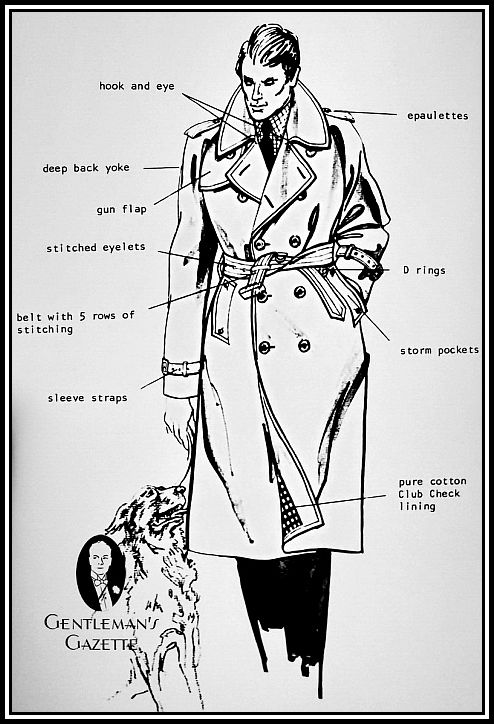 Reproduced from The Gentleman’s Gazette
Reproduced from The Gentleman’s Gazette
- a Deep Back Yoke, which rests on the shoulders of the coat and ensures that water does not seep into the coat as it runs down off the shoulders;
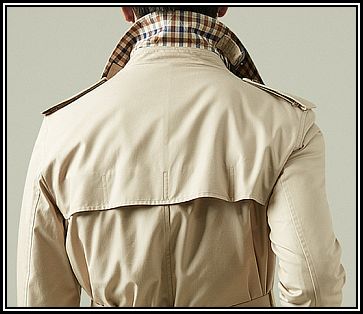 Deep Back Yoke
Deep Back Yoke
- Raglan Sleeves: this type of sleeve extends in one piece to the collar, leaving a diagonal seam from underarm to collarbone and giving the garment a relatively undefined look;
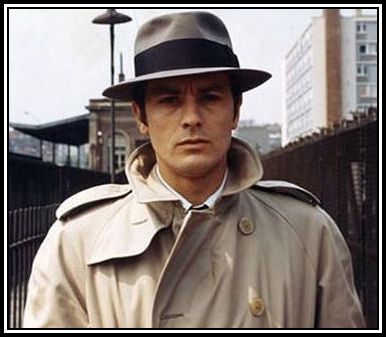 Alain Delon (1935- ) wearing a Trench Coat – note the Raglan Sleeves
Alain Delon (1935- ) wearing a Trench Coat – note the Raglan Sleeves
- Epaulettes were added during the First World War and used to display the rank of the wearer;
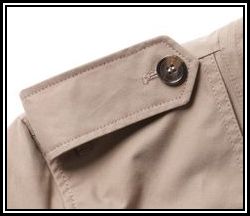 Epaulette
Epaulette
- Buckled Cuff Straps, which are used to tighten the sleeves during excessive rain;
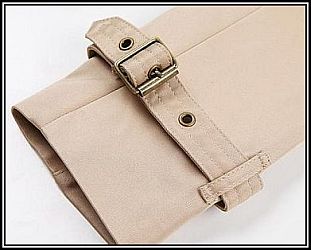 Buckled Cuff Strap
Buckled Cuff Strap
- a Hook & Eye is found Just below the collar and allows the collar to be closed up all the way;
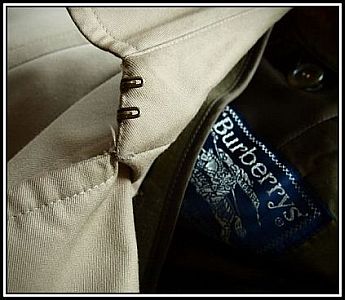 Hook & Eye
Hook & Eye
- a Button-Down Storm Flap on one shoulder also known as a Gun Flap and served to protect against harsh weather;
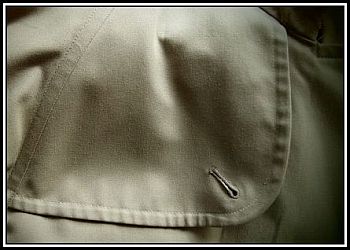 Button-Down Storm Flap (Gun Flap)
Button-Down Storm Flap (Gun Flap)
- Storm Pockets are deep side pockets that are Through Pockets (i.e. pockets that can be reached from the outside or inside); they are buttoned on the outside to ensure that what is carried in them cannot fail out and remain dry;
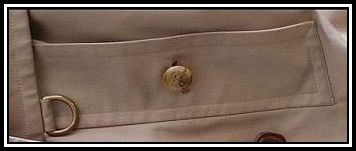 Storm Pocket & D-Ring
Storm Pocket & D-Ring
- and D-Rings were also added during the First World War and used to attach belongings and military gear such as map cases. It is uncertain if they were ever used to carry Grenades.
-oOo-
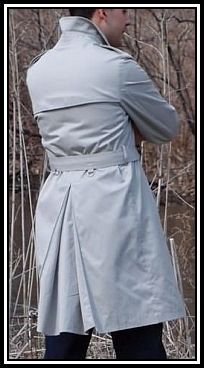 The Trench Coat, rear view
The Trench Coat, rear view
Showing a Belt with D-Rings and a Vent with a Wedge, which allowed quick and easy movement
-oOo-
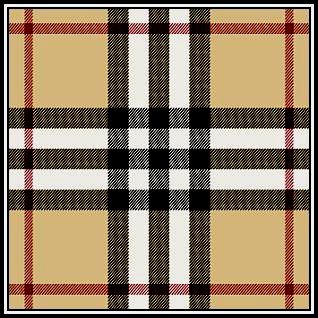 The Burberry Check
The Burberry Check
Traditionally, The Trench Coat today has a checked lining. The Burberry Check, now registered as a trademark, was introduced as a lining to The Coat in 1920’s. Aquascutum introduced its hallmark club check lining, Aquascutum Club, in 1967.
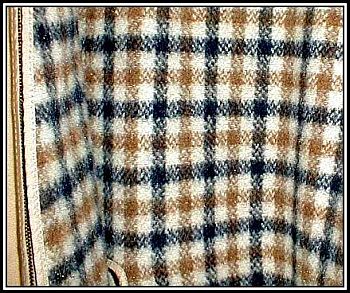 Aquascutum Club
Aquascutum Club
-oOo-
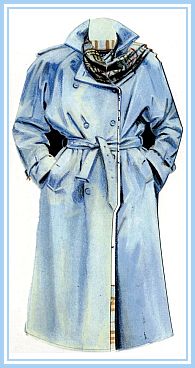 Woman’s Trench Coat, 1972
Woman’s Trench Coat, 1972
The Burberry Trench Coat was advertised to both men and women during the First World War. Once the soldiers began to return home, sales increased since the public wished to be associated with heroism and patriotism.
-oOo-
The military style model became The Trench Coat that remains popular today with the public. It has also proven popular with those in the entertainment business and has been worn by actors in a number of films, as well as at their leisure.
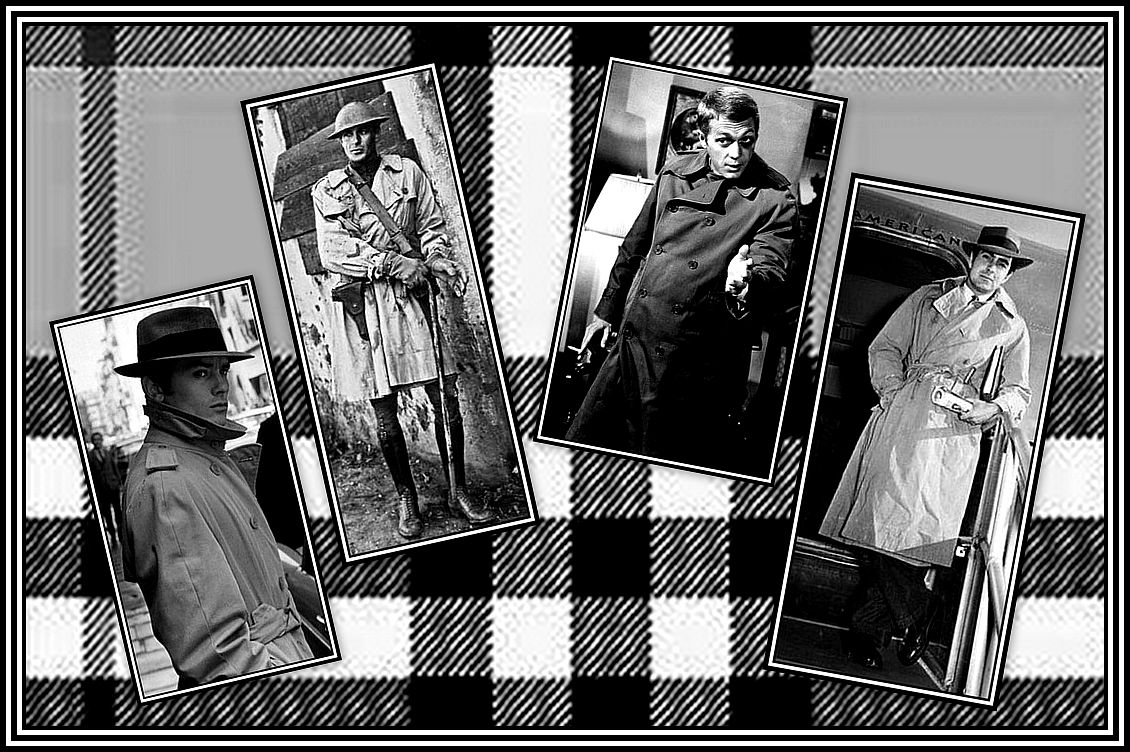 The Trench Coat worn by, from Left to Right,
The Trench Coat worn by, from Left to Right,
Alain Delon, Gary Cooper (1901-1961), Steve McQueen (1930-1980) & Tyrone Power (1914-1958)
Warner Brothers Pictures Inc. produced a number of film noir and gangster films during the 1930s and 1940s where detectives, heroes and anti-heroes often appeared in a Trench Coat. Perhaps the most famous appearance of The Coat was when worn by Humphrey Bogart in the film, Casablanca.
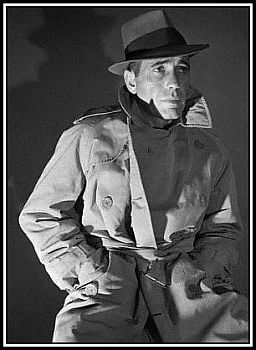 Humphrey Bogart
Humphrey Bogart
Women also wore The Trench Coat in film: Marlene Deitrich (1901-1992) was one of the first women-in-film to appear dressed in The Coat.
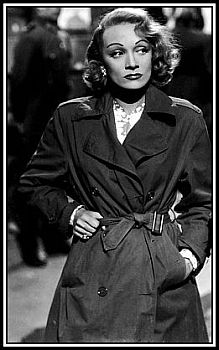 Marlene Deitrich
Marlene Deitrich
In 1961, Audrey Hepburn (1929-1993) was on the verge of being recognised for her style and taste and was about to become fashion icon. These qualities were helped to fruition by her wearing The Coat during two of her films, Breakfast at Tiffany’s (1961) and Charade (1963), of the time.
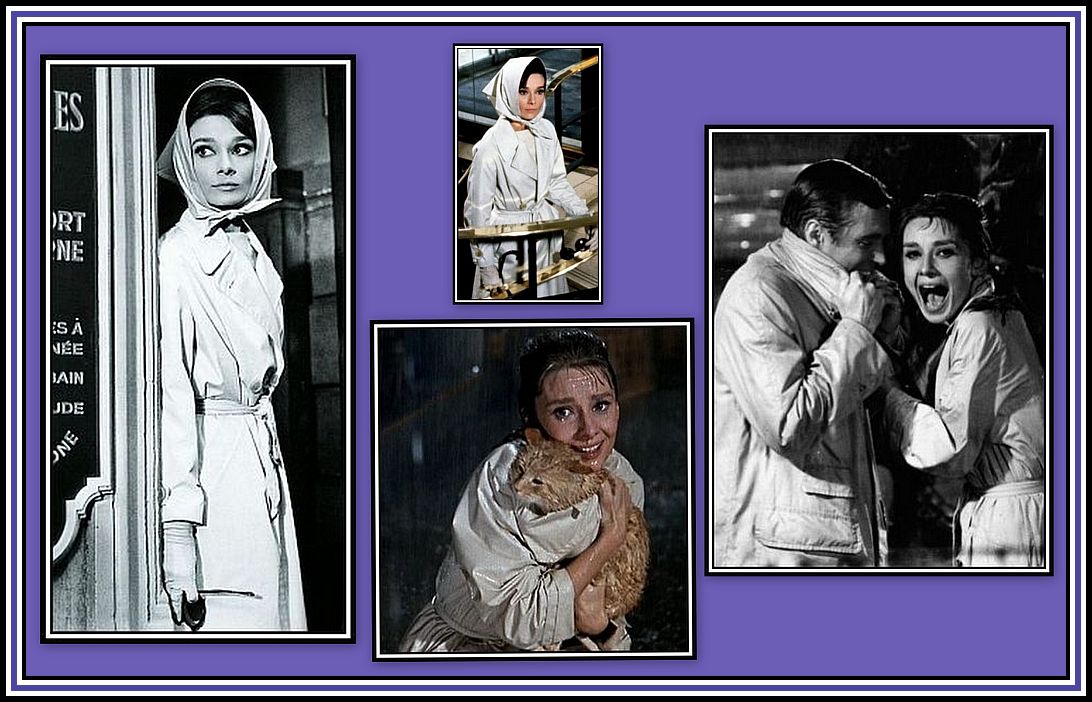 Audrey Hepburn (with George Peppard (1928-1994), Right)
Audrey Hepburn (with George Peppard (1928-1994), Right)
Many actresses and personalities have been photographed over the years wearing The Coat, as may be seen from the collage following:
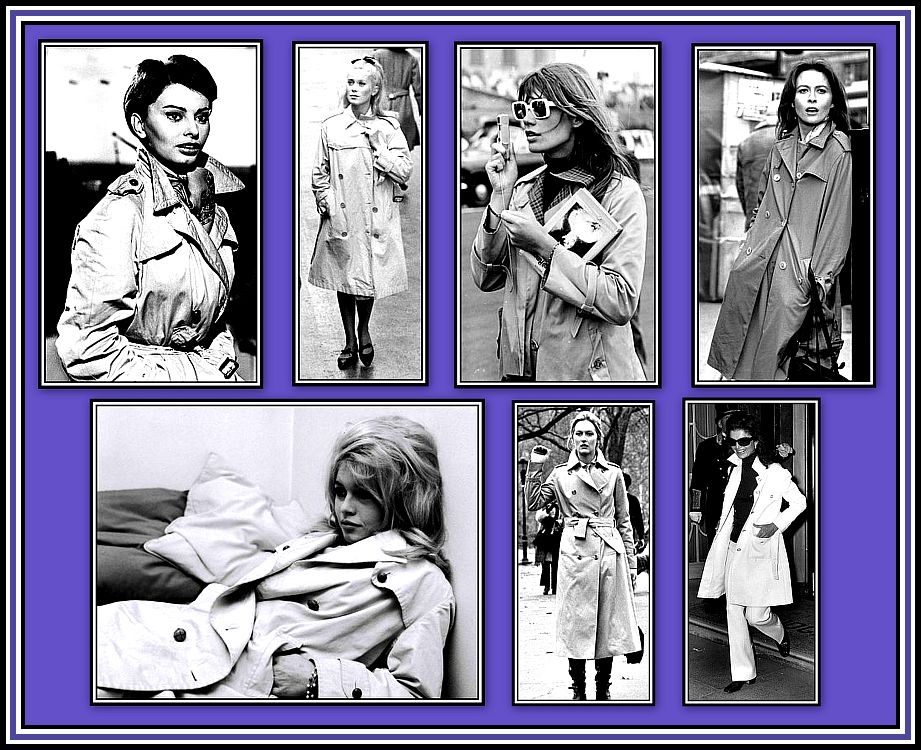 Clockwise, from Top Left: Sophia Loren, Cathrine Deneuve, Francoise Hardy, Faye Dunaway,
Clockwise, from Top Left: Sophia Loren, Cathrine Deneuve, Francoise Hardy, Faye Dunaway,
Brigitte Bardot, Meryl Streep & Jacqueline Kennedy Onnasis (1924-1994)
-oOo-
The Coat remains popular today and is often seen on Catwalks and in shop windows. Burberry and Aquascutum and other brands continue to produce their own versions each year.
-oOo-
The Burberrys’ Trench Coat was usually Made in England until 1999. Following this, production moved to Turkey. In November 2015, The Company announced plans to invest over £50 million in a new manufacturing and weaving facility in Yorkshire thereby allowing the Trench Coat to be Made in England once more.
—–ooooOOOoooo——
POOR IMAGE: CHAVS & NEDS
In 2005, Burberry-style check and clothing became the fashion favoured by Chavs, who were a group of young anti-social British people. The definition of the word Chav is one of speculation: it appears to be derived from the Romani word chavi, which means child. However, many believe that it is an acronym for Council House and Violent since those described live in such homes and have been known to demonstrate violent activity.
Chavs were considered unsophisticated despite their attire and considered to lack taste and style. Burberry stated that the clothes worn by Chavs were not products produced by them, but were, in fact, cheaper counterfeit versions of their traditional styles. It took Burberry a number of years to dispel any association with this group.
Click Here to watch a documentary about Burberry & The Chavs
Aquascutum also gained an undesirable reputation at one time in the Glasgow. Here a group of young anti-social people linked to gang activity began to add hats and scarfs seemingly made by the company. Seemingly this was known as Ned Culture.
—–ooooOOOoooo——
——-oooOOOOOOOooo——-
Readers can TWEET their LIKES & DISLIKES to me at
or
make comments on theWebsite’s FACEBOOK PAGE
or
consider leaving a Comment `below.
——oooOOOooo——
Click here to GO to OTHER DEPARTMENT STORES – 10
BURBERRYS OF LONDON: BUILDINGS
——oooOOOooo——
Click here to return to OTHER DEPARTMENT STORES – 10
BURBERRYS OF LONDON – THE BEGINNINGS
——oooOOOooo——
——oooOOOooo——
——oooOOOooo——
Click here to return to OTHER DEPARTMENT STORES – 9
THE KENSINGTON DEPARTMENT STORES – INTRODUCTION
——oooOOOooo——
Click here to return to OTHER DEPARTMENT STORES – 8
ARDING & HOBBS DEPARTMENT STORE
——oooOOOooo——
——oooOOOooo——
——oooOOOooo——
Click here to return to OTHER DEPARTMENT STORES – 5
SPOKES DEPARTMENT STORE
——oooOOOooo——
Click here to return to OTHER DEPARTMENT STORES OF MY YOUTH –
4 – GARDINER’S DEPARTMENT STORE
——oooOOOooo——
——oooOOOooo——
Click here to return to OTHER DEPARTMENT STORES OF MY YOUTH –
2 – GAMAGES
——oooOOOooo——
Click here to return to OTHER DEPARTMENT STORES OF MY YOUTH –
1 – WICKHAMS
——oooOOOooo——
Click here to return to SHOPPING WITH MY MOTHER;
——oooOOOooo——
Click here to return to SHOPPING WITH MY FATHER;
——oooOOOooo——
Click here to return to THE DEPARTMENT STORE HOME PAGE
——oooOOOooo——
Click here to return to the TABLE OF CONTENTS
——oooOOOooo——

